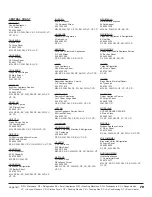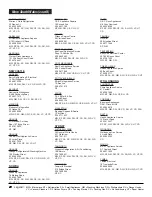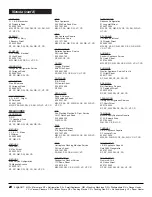
Load dry items loosely, spacing
evenly around agitator, and close
the lid.
A typical wash load: two twin sheets,
two tablecloths, four collared
shirts, three pillow cases, three
small bath towels, three t-shirts,
and three pairs of shorts.
Place large items in bottom, small
items in the middle and medium
items on top.
When loading wet items make
sure you set the load/water level
high enough to allow the items to
move freely.
Wash bulky items like blankets
separately.
To add items after washer has
started, push in Cycle knob and
submerge additional items next to
the agitator. Close the lid and pull
Cycle knob out to restart.
To reduce wrinkling, give
permanent press items, synthetics
and poly knits room to move freely
in the washer.
NOTE:
•
Do not wrap large items like sheets
around the agitator.
•
Do not wash fabrics containing
flammable materials (waxes,
cleaning fluids, etc.) in your
washer.
Load
Leave the lid open after washing
to allow moisture to evaporate. The
wash basket is practically care free.
If you want to clean the washer use
a clean soft cloth dampened with
liquid detergent, then rinse. (Do
not use harsh or gritty cleaners.)
Fill Hoses—
Hoses connecting
washer to faucet should be replaced
every five years.
Maximum pressure
and temperature:
10 bar at 25°C., 1.5
bar at 60°C.
Drain Hose—
Maximum pressure and
temperature:
1.5 bar at 60°C.
Moving and Storage—
Ask the service
technician to remove water from
drain pump and hoses. Contact
your local distributor for
information on how to keep the tub
stationary when moving the washer.
Long Vacations—
Be sure water
supply is shut off at taps. Drain all
water from hoses if weather will be
below freezing.
The Washer
Care & Cleaning
9










































